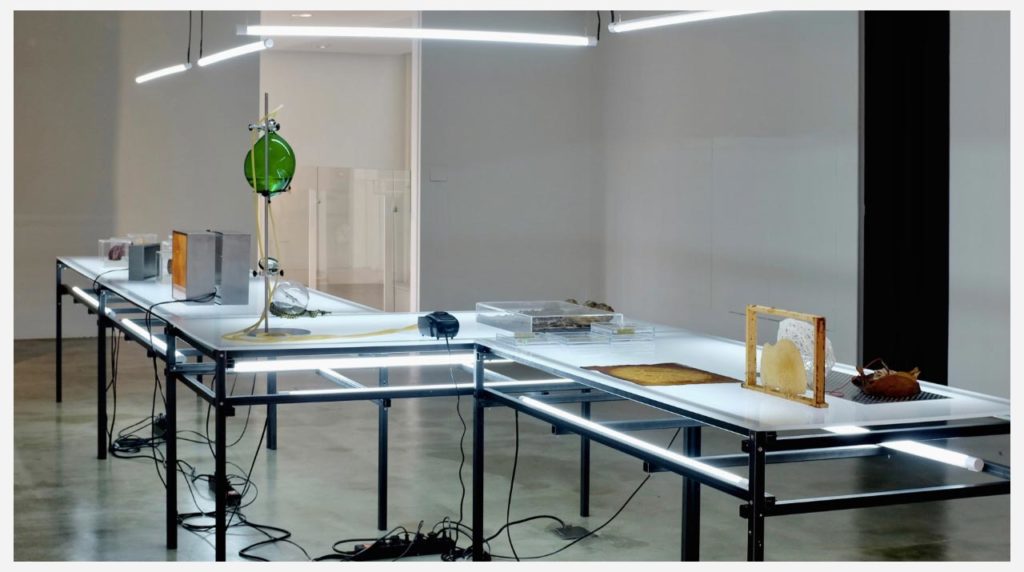Brussels in SongEun: Imagining Cities Beyond Technology 2.0 engages in a social-political discourse that involves citizens and various interest groups on the following question, namely what constitutes a desirable smart city in an era of technological revolution? Contemporary cities are magnets that attract growing numbers of people, resources, ideas, opportunities and knowledge. Today, 50% of the world’s population lives in global areas. By 2050, this percentage will have increased to 70%. While the application of new digital technologies in urban spaces has been celebrated for its ability to increase citizens’ well-being, various experiments around the world have revealed how we forget to examine the impact, on various levels, of this digital development in the cities of the future, including on the psychological, ethical, philosophical, social and political level.
Brussels in SongEun: Imagining Cities Beyond Technology 2.0 assembles a group of seven Brussels-based and four Korean contemporary visual artists.
SongEun ArtSpace, Seoul, South Korea
opening 25 March 2019 running through June 8 2019
Brussels in SongEun
With the bio-art installation Future Archaeology AnneMarie Maes presents a version of her Laboratory for Form and Matter with a focus on the transformative power of bacteria. Set up as a Cabinet of Curiosities, every object on the laboratory tables is the outcome of a particular experiment. The bizarre biomorphic artifacts add an uncanny rhythm to the installation, which stands in stark contrast to the strict geometry of the laboratory architecture bathing in white light: hard and soft oppose each other.
In her work AnneMarie Maes adapts scientific methods and biotechnology to explore living systems as artistic subjects. Recently she started a new research project that delves into the creation of fabrics made by bacteria and algae. Besides being an alternative for plastics, these new materials can also become alternative energy sources. Future Archaeology offers a concrete starting point for an exploration of possible futures through artistic research on material science and biotechnology. Navigating between a blueprint and a proof of concept, the experiments presented in this installation can be seen as an artifacts from the future, as fragments of a world to come.


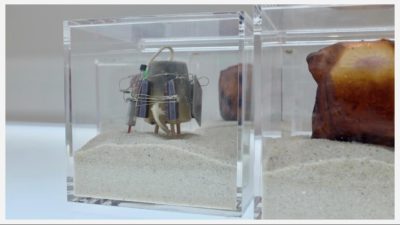
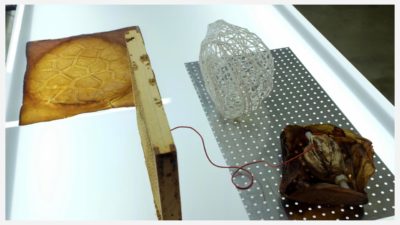
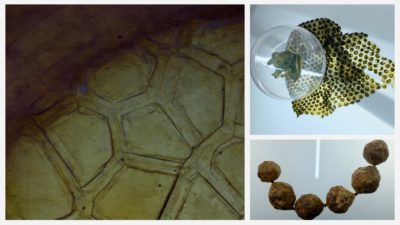


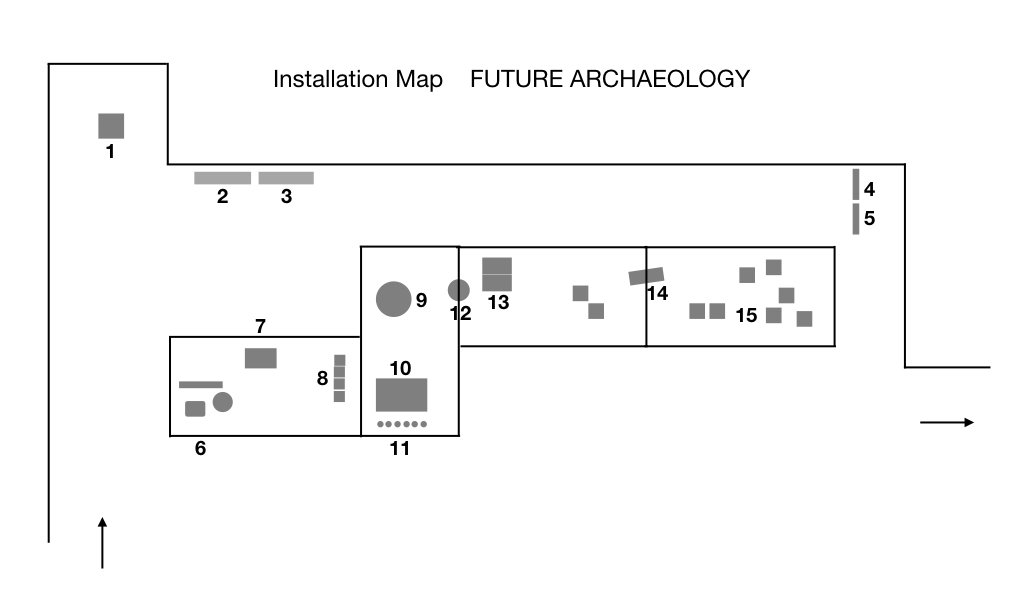
1. Golden Beehive (modelled after an Eucalyptus seedpod with wax made by Honeybees)
2. Glossa (Scanning Electron Micrograph of Honeybee Tongue, 150x magnified)
3. Stimulus (Scanning Electron Micrograph of Fine Dust Particle, 3500x magnified)
4. Assembled Microbial Skins (natural)
5. Assembled Microbial Skins (colored with vegetal dyes / Hibiscus, Cochineal)
6. Belly (model for an Intelligent Guerrilla Beehive, frame with comb build by Honeybees, 3D printed skeleton)
7. Turtle (cellulose skin grown by bacteria and dried in 3D milled form)
8. Pollution Sensors (color changing & pollution sensitive bacteria on microbial skin medium)
9. Algae Generator
10. Algae, Stones, Microbial Skin, Hemp Fibers
11. Beads made from Honey, Wax & Propolis
12. Bioplastic made from algae, bacterial sensor indicating the fine dust pollution (in the ball)
13. 2 Lightboxes with colored cellulose, grown by Bacteria
14. Video scanning organic matter – made with microscope
15. Cases with a series of Intelligent Guerrilla Beehive models made from different materials

